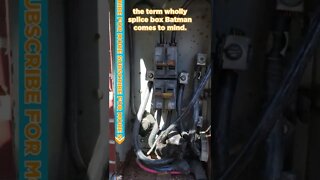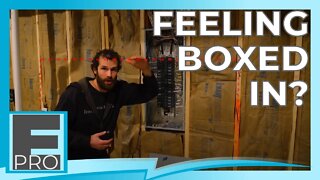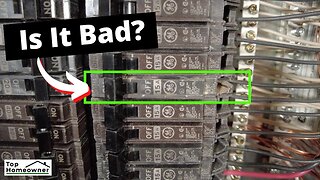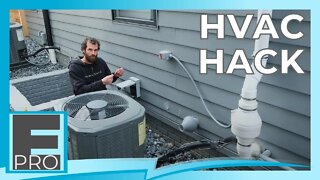The Most Common Code Violation!!!
Let’s face it. All of us electricians have been there at least once. We go out to perform work somewhere and someone has decided to use the electrical room/space as a storage room! Things are stacked like Jenga in front of the panels, and since transformers have a nice flat top on them, they get repurposed as a shelf or additional work bench!! So, for the first 15 minutes, in lieu of performing electrical work, we are moving items just so we can get to the panel. And that is the minimum amount of disruption, as safety must also be considered. In the latest episode of Electrician U, Dustin digs into the topic of working space around electrical equipment.
🤘⚡️MEMBERSHIP⚡️🤘
JOIN ELECTRICIAN U - become a member and get:
FREE Continuing Education every year
FREE Practice Exams
FREE Monthly Video Courses
FREE Weekly Live Instructor-Led Classes
FREE Monthly Educational Newsletter
Premium Members-Only Content
Private Discord Channel
Monthly Members-Only Discord Chats
Sign up here --- https://www.electricianu.com/electrician-u-membership/
🎧🎹MUSIC AND VIDEO:🎹🎧
https://www.facebook.com/descantmv
🎬✍️ART AND ILLUSTRATION:✍️🎬
https://www.daverussoart.com
Lets start in Article 110.26 of the NEC is the code reference for working space around our electrical equipment. This article defines how much clearance we must have around our equipment from a width, depth, and height perspective. Article 110.26(B) states “Working space required by this section shall NOT be used for storage. When normally enclosed live parts are exposed for inspection or servicing, the working space, if in a passageway or general open space, shall be suitably guarded”. So, if it is in black and white language, then why is this particular code reference considered one of the most violated? In a nutshell, while all of us electricians are privy to this information, most homeowners/business owners or managers are not. They don’t study the code like we do or have access to a code book or even deal with tradespeople much at all!!
As a good steward of the electrical trade (as we all are!!) we must insert ourselves into the fray of this topic. For instance, once you have completed your work in the building and are ready to leave, take a moment to explain to the homeowner, manager, etc. that this area must be kept clear. Not only for convenience’s sake, but also from a safety standpoint. If something were to happen and a breaker needed to be turned off, or reset, it could not be done efficiently, and someone could get hurt. Don’t forget that transformers need clear space all around them to be able to shed some of the heat generated and clogging that space up does not allow them to do that. It may help to even have a copy of the code to show them the code references. Installing signage at the door to the electrical room, on the front of the panels, and on the top of the transformers that say something like “Keep Clear 4’” or “Not for Storage”, may be an additional action that can be beneficial in keeping the electrical room clear of unnecessary clutter.
As professional electricians, we must be well versed in Article 110.26 of the NEC. Again, this gives us the clearances we need to have around our equipment. When laying out an electrical room for our equipment, these dimensions will become critical, so it pays huge dividends to know this code. And by educating the general public about the topic (when relevant!!) can perhaps save you and/or some other electricians a huge amount of grief!!
We hope this has been helpful in understanding the topic of electrical rooms as storage rooms. Lets hear it in the comments below your worst experience with clearances not being maintained when you went into someplace to service it!!
Please continue to follow Electrician U as we are constantly adding new content to help our followers along in their careers!!
-
 7:23
7:23
Electrician U
1 year agoWhich Codebook Should I Study? Electrical Code NEC 2023, 2020, 2017?
890 -
 0:37
0:37
EPro - Electric Pro Academy
1 year agoHow many code violations? Part 5
56 -
 4:45
4:45
EPro - Electric Pro Academy
2 years agoWorking Space - Code Minimum
4 -
 6:29
6:29
EPro - Electric Pro Academy
2 years agoCode Related to Countertops
14 -
 1:50
1:50
EPro - Electric Pro Academy
2 years agoCloset Electrical - Code Minimum
9 -
 5:34
5:34
Top Homeowner
1 year agoRecognizing a Bad Circuit Breaker - DIY Home Electrical Safety
16 -
 3:31
3:31
EPro - Electric Pro Academy
2 years agoAC Unit Electrical - Code Minimum
14 -
 3:22
3:22
EPro - Electric Pro Academy
2 years agoBasement Electrical - Code Minimum
8 -
 1:53
1:53
EPro - Electric Pro Academy
2 years agoHallway and Stairway Electrical - Code Minimum
28 -
 16:49
16:49
Tool Box Talk For Electricians
6 months agoWhat is the Difference Between Good And Bad Electricians
28